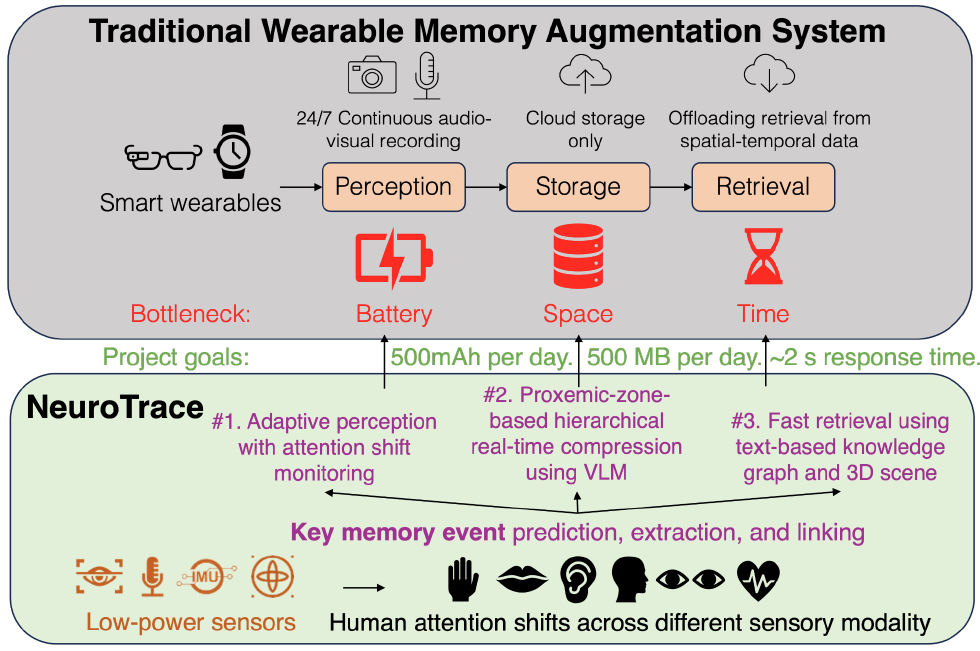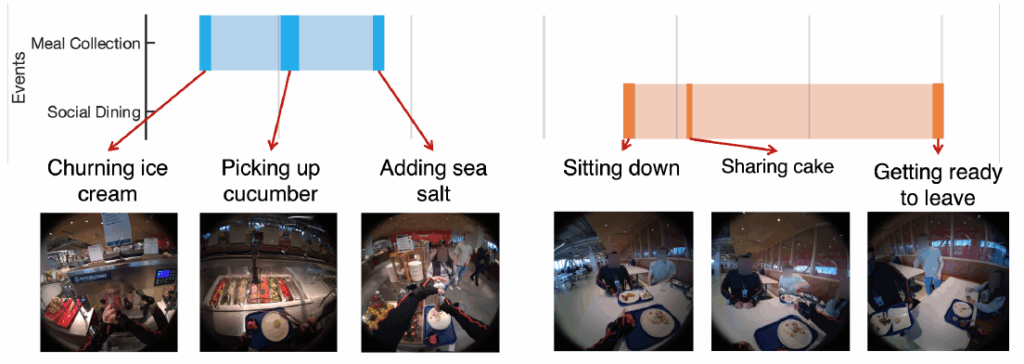Samsung START funds CSE researchers’ wearable memory augmentation system

Faculty in Computer Science and Engineering (CSE) at the University of Michigan have secured $200,000 in funding from the Samsung START (Strategic Alliance for Research and Technology) program to pioneer the next generation of wearable memory augmentation. Led by Assistant Professor Ke Sun, with Assistant Professor Anhong Guo and Kevin and Nancy O’Connor Professor of Computer Science Kang G. Shin, their proposed NeuroTrace system aims to turn smart glasses and wearables into AI-powered assistants capable of capturing and retrieving life’s key moments, from the mundane to the meaningful.
“More and more people are using smartwatches or smart glasses, but for the most part, they’re only scratching the surface of what’s possible,” said Sun. “Today’s devices may log your heartbeat or daily steps, but they don’t help you remember where you left your keys or what you talked about in an important meeting. With NeuroTrace, we want to combine wearable technology and intelligent AI processing to change that.”

NeuroTrace will go beyond standard health tracking by using a suite of low- and high-power sensors embedded in devices like smart glasses, watches, and even earbuds. These sensors will work together to capture “key events,” moments of heightened attention or significance that serve as anchors in our memory. The system will rely on AI to detect these moments automatically, but will also allow users to designate specific objects (like eyeglasses or keys) or events to be tracked.
Rather than continuously recording everything a wearer sees or hears—a process that would quickly drain device batteries and use up storage—the researchers intend to equip NeuroTrace with resourceful “triggering” mechanisms. Low-power sensors will monitor for cues like head or hand movements, changes in gaze, or shifts in ambient sound. Once a potentially meaningful moment is detected, higher-power camera and microphones will be briefly activated to capture fuller context, then promptly deactivated to preserve power.
The team’s goal is to build a memory augmentation system that is powerful as well as efficient: “Most of what happens in our day isn’t really necessary to remember,” explained Sun. “By focusing just on those moments when our attention shifts or something notable happens, we can greatly extend battery life and minimize data storage, while ensuring the right information is captured.”

The system will also be designed around privacy concerns. Information gathered in highly personal spaces will be treated differently from more public interactions, and the team’s ongoing collaboration with Samsung will help refine where and how data is processed, whether on individual devices or in the cloud.
While tracking down lost items may be the most relatable application, the researchers see the potential for a variety of impactful use cases. “You might be able to recall exactly what a doctor told you during a medical visit, or whether you turned off the stove before leaving the house,” Guo noted.
Shin pointed out further possibilities: “In professional settings, from athletic coaching to business negotiations, NeuroTrace could deliver instant, memory-driven insights, reminding you of someone’s name and role, or pulling up details of a past meeting exactly when you need them.”
This grant from Samsung marks the beginning of what the researchers hope will be a long-term, evolving partnership. “The first year’s support will help us prototype and benchmark the technology, but we hope to develop it into a mature platform in collaboration with Samsung,” said Sun.
Innovations from NeuroTrace could inform the next generation of Samsung’s wearable products, from smart appliances to phones, tablets, and wearable devices. As the team takes on the complexities of sensor integration and user privacy, they remain focused on the central goal of creating technology that benefits people’s daily lives.
 MENU
MENU 
